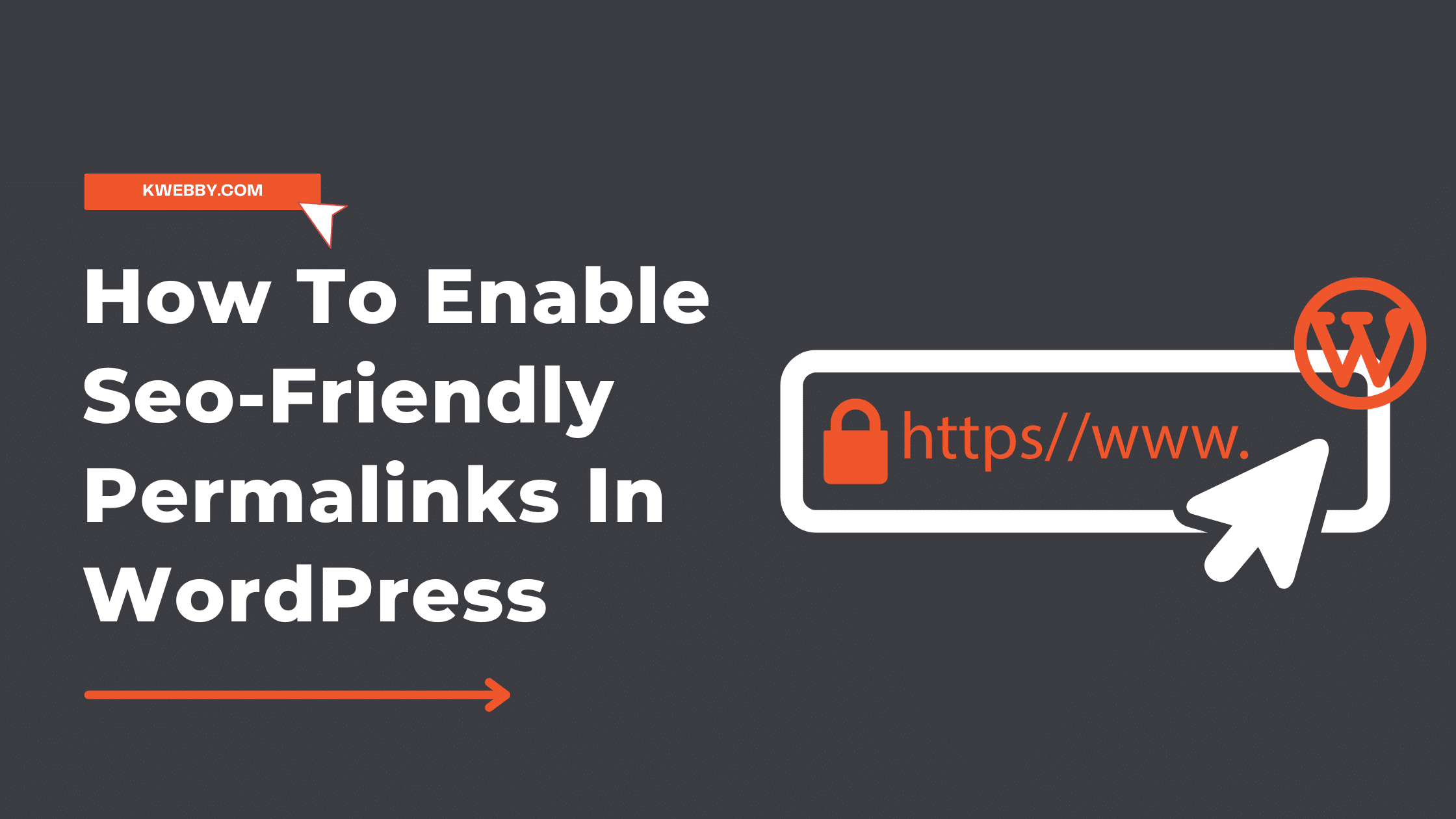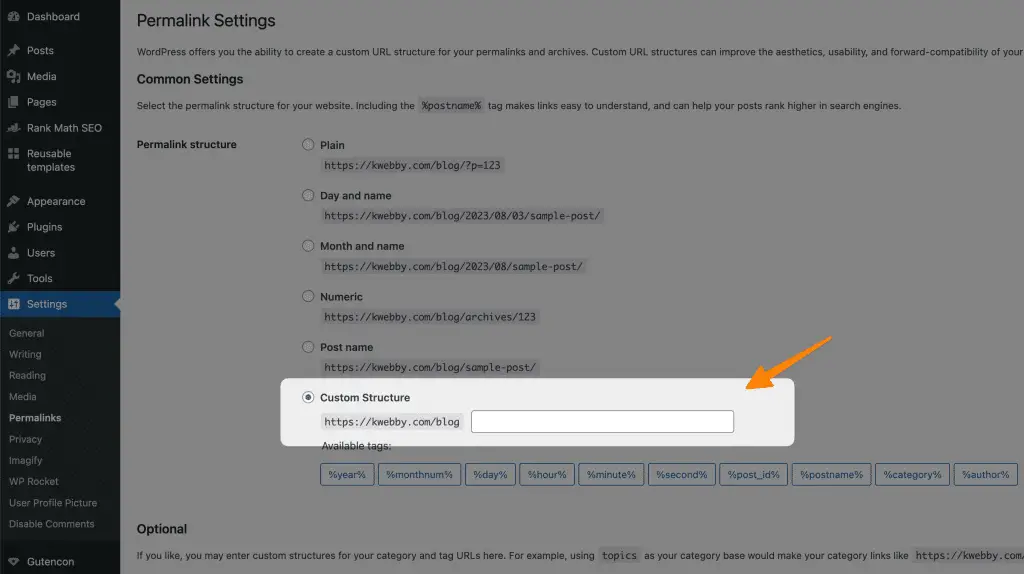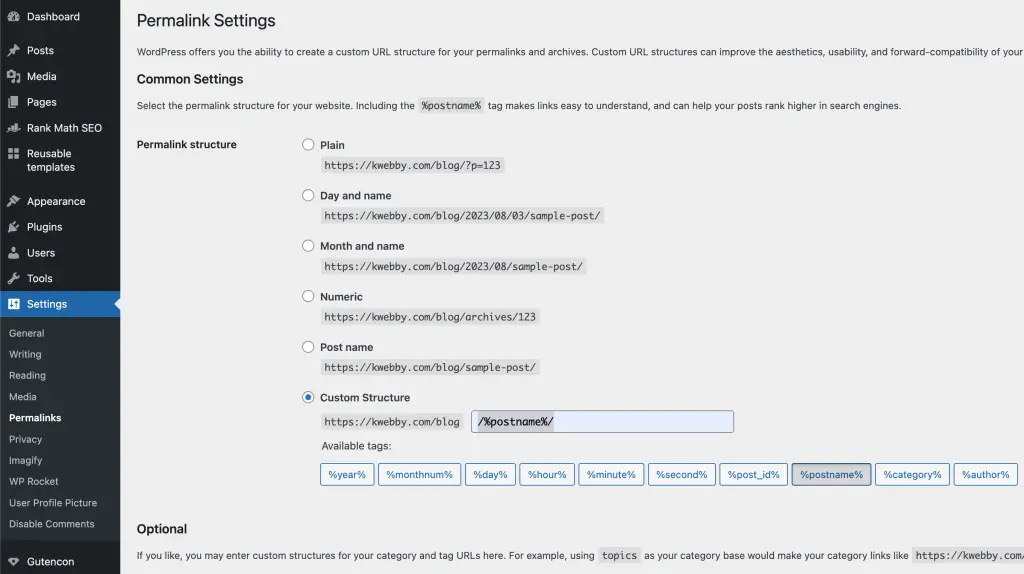
How To Enable Seo-Friendly Permalinks In WordPress in 2025
Choose Your Language:
Are you ready to take your WordPress website to the next level and drive more traffic? Look no further than optimizing your permalinks for SEO. With search engine optimization (SEO) being a crucial aspect of online success, it’s essential to have SEO-friendly URLs that are easily understood by both users and search engines.
In this article, we will show you how to enable SEO-friendly permalinks in WordPress.
By choosing the right permalink structure, customizing your permalinks, and including relevant keywords, you can significantly improve your website’s visibility in search engine results.
Previously in WordPress SEO: How To Show ‘Last Updated’ Dates In WordPress (3 Easy Methods)
We’ll also guide you on how to redirect old permalinks to new ones seamlessly. Additionally, we’ll provide tips on checking and optimizing your permalink settings for maximum impact.
Get ready to boost your website’s rankings and attract more visitors with these simple yet impactful techniques for enabling SEO-friendly permalinks in WordPress. Let’s dive into the world of innovation and watch your website soar!
1 Importance of SEO-friendly URLs
Having user-friendly URLs on your website can significantly boost your search engine rankings, making it easier for potential customers to find and engage with your content. When it comes to SEO, using descriptive URLs provides several benefits:
- Improved Click-through Rate (CTR): Descriptive URLs are more likely to attract clicks from users as they provide a clear indication of what the page is about. This can lead to higher CTRs and increased organic traffic.
- Enhanced User Experience: SEO-friendly URLs are not only beneficial for search engines but also for users. Clear and concise URLs make it easier for visitors to understand the context of a page just by looking at its URL.
To optimize your URL structure for search engines, there are some best practices you should follow:
- Use Keywords: Incorporate relevant keywords in your URLs to give search engines a better understanding of your content.
- Keep It Short and Simple: Shorter URLs tend to perform better in search results. Avoid using unnecessary words or characters that don’t add value.
As you move forward in optimizing your website’s permalinks, the next step is choosing the right permalink structure that aligns with both SEO best practices and your business goals.
2 Choosing the Right Permalink Structure
Selecting the ideal permalink structure is like finding the perfect key to unlock higher search engine rankings and improved user experience on your website. When it comes to choosing the right permalink structure, there are a few best practices you should follow.
Firstly, it’s important to keep your URLs short and concise, including relevant keywords that accurately describe the content of each page. This not only helps search engines understand what your page is about but also makes it easier for users to remember and share your URLs.
Additionally, using category names in your permalinks can also have a positive impact on your website ranking. By organizing your content into categories and incorporating them into your URL structure, you create a logical hierarchy that search engines can easily crawl and understand.
3 How to edit Permalinks in WordPress?
Editing permalinks in WordPress is easy.
First, log into the WordPress dashboard and go to Settings > Permalinks.

On this page, you’ll be able to choose the type of URL structure you want for your website from a list of available options.
By default your permalinks are set as https://kwebby.com/?p=123 which you need to change to https://kwebby.com/your-post, Therefore to do this you need to select the custom structure option as below;

Now you need to add the following tag to the input section;
/%postname%/as you can see below;

This is the best SEO Practice to show your post name as in your permalinks.
Alternatively, if you want to show your category name in the permalinks then you can add the following;
/%category%/%postname%/It will show your posts as https://kwebby.com/seo/10-tips-seo
Remember that the permalink structure you choose will have a lasting impact on how search engines perceive and rank your website. So take the time to carefully consider which option aligns best with your content strategy and target audience.
Transitioning into customizing permalinks in WordPress, now that you understand the importance of selecting the right permalink structure, let’s delve into how to further optimize and customize them for maximum SEO impact.
4 Including Keywords in Permalinks
Including relevant keywords in your website’s URL structure is like adding the perfect seasoning to a dish – it enhances the flavor and makes it more enticing for both search engines and users. When it comes to permalinks, incorporating keywords is one of the best practices for optimizing your WordPress site for SEO.
By including relevant keywords in your permalinks, you are sending clear signals to search engines about the content of your pages.
Keyword-rich URLs have a significant impact on SEO performance. When search engines crawl your website, they analyze the URL structure to understand what your page is about. Including keywords in the permalink helps search engines categorize and index your content more accurately. This can improve your website’s visibility in search engine results pages (SERPs) and increase organic traffic.
To make sure you’re making the most of keyword-rich URLs, consider using shorter permalinks that only include essential keywords related to the topic of each page. Avoid unnecessary words or characters that don’t contribute to describing the content effectively.
In the next section, we’ll discuss how to redirect old permalinks to new ones seamlessly, ensuring that any existing links or bookmarks pointing to previous URLs will still lead visitors to their intended destinations without losing any SEO value.
5 Redirecting Old Permalinks to New Ones
To ensure a smooth transition, you’ll want to seamlessly redirect your old permalinks to the new ones so that visitors can still easily find their intended destinations without losing any SEO value. Handling 404 errors during permalink redirection is crucial for maintaining a positive user experience and preserving your website’s ranking in search engine results.
Read this post: How to Redirect URL in WordPress: A Comprehensive Guide (4 Methods)
When updating permalinks, it’s essential to follow best practices to avoid losing SEO ranking.
Firstly, it’s important to set up proper redirects from the old URLs to the new ones using 301 redirects. This tells search engines that the content has permanently moved and ensures that visitors are automatically redirected to the correct page.
Additionally, regularly monitor your website for any 404 errors that may occur during permalink redirection. These errors indicate broken links and can negatively impact your SEO efforts. Use tools like Google Search Console or website auditing software to identify and fix these issues promptly.
By handling 404 errors effectively and implementing best practices for updating permalinks without losing SEO ranking, you will maintain a seamless user experience while improving your website’s visibility in search engine results.
Moving on to checking and optimizing permalink settings…
6 Checking and Optimizing Permalink Settings
Now that we’ve covered the redirections, let’s check and optimize our permalink settings.
Permalinks play a crucial role in your website’s SEO performance and user experience. Making common permalink mistakes can negatively impact your website traffic and search engine rankings.
One of the most common mistakes to avoid is using default permalinks that include numbers or random characters. These types of permalinks are not only unfriendly to search engines but also difficult for users to remember or share. Instead, opt for custom permalinks that include relevant keywords related to your content.
Another mistake is using long and complex permalinks. Keep them concise, including only necessary information that accurately describes the content on the page. Long URLs not only look messy but can also be challenging for search engines to crawl and index.
The impact of permalinks on website traffic should not be underestimated. Search engines use these URLs as an important ranking factor, so optimizing them can improve your chances of appearing higher in search results.
By avoiding common permalink mistakes and optimizing your URL structure with relevant keywords, you’ll enhance both user experience and SEO performance, ultimately driving more organic traffic to your website.
7 Frequently Asked Questions
7.1 How do permalinks impact website loading speed and overall performance?
Permalinks, when optimized for website performance, can significantly impact loading speed. By incorporating keyword-focused and data-driven strategies, you can enhance overall performance. Embrace innovation by understanding how permalink optimization can boost your website’s efficiency.
7.2 Can I change the permalink structure without affecting my existing content and search engine rankings?
Changing the permalink structure can impact website traffic and search engine rankings. However, with proper redirection and optimization techniques, you can minimize any negative effects on your existing content and maintain your search engine rankings.
7.3 Is it possible to have different permalink structures for different types of content on my WordPress website?
Yes, it is possible to have different permalink structures for different types of content on your WordPress website. This allows you to customize permalinks for better user experience and follow best practices for managing multiple permalink structures in WordPress.
7.4 Are there any SEO plugins or tools that can help optimize permalinks in WordPress?
Looking to optimize your WordPress permalinks for SEO? Wondering if there are any plugins or tools available? Discover the best practices and find out which SEO plugins can help you optimize your permalinks in WordPress.
7.5 Does changing the permalink structure have any impact on social media sharing and backlinks to my website?
Changing the permalink structure can have an impact on website traffic as it affects social media sharing and backlinks. SEO-friendly permalinks bring benefits like improved visibility, higher ranking, and increased organic traffic from search engines.
8 Conclusion
In conclusion, optimizing your WordPress permalinks for SEO can greatly improve your website’s visibility and ranking in search engine results. By choosing the right permalink structure, customizing the URLs, and including relevant keywords, you can enhance your website’s chances of being found by potential visitors.
An interesting statistic to note is that websites with keyword-rich URLs have been found to receive 45% more organic traffic compared to those without.
So take the time to fine-tune your permalinks and watch your website soar in search engine rankings!




